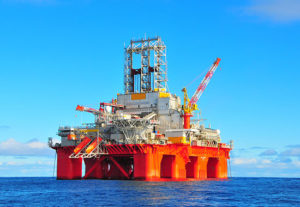May
5
Trump Puts Offshore Drilling Plans on Indefinite Hold
“By the time the court rules, that may be discombobulating to our plan.” — Secretary of the Interior David Bernhardt to the Wall Street Journal
I wrote early last year about then-Secretary of the Interior Ryan Zinke’s “new draft offshore oil and gas plan” which would make “over 90 percent of the total OCS acreage and more than 98 percent of undiscovered, technically recoverable oil and gas resources in federal offshore areas available to consider for future exploration and development.” While the plan has remained a work-in-progress, I concluded that moving forward with the proposal would be a huge win for both the nation and the Trump administration.
Unfortunately, according to newly-confirmed Interior Secretary David Bernhardt, the administration’s plans have hit a major snag, and those efforts appear to be suspended until after the 2020 elections.
Of course, there has been bipartisan opposition to the offshore drilling expansion since the beginning. Not surprising that the far-Left, anti-fossil fuel activists got involved. The National Wildlife Federation’s Collin O’Mara said the Trump administration “needs to go one step further and fully and permanently scrap its plan to open our coasts to unfettered offshore drilling.” You also had politicians like Rep. Joe Cunningham (D-SC) saying things like “offshore oil and gas drilling is dangerous, unwanted, and a threat to our economy and way of life.” Governors and other reps from coastal states continue to express concerns for everything from the dangers of pipeline & oil rig accidents to the need for pristine beaches (and coastal views) for their economy. The administration has been working on exemptions and compromises with these states.
But, a recent court decision on the Alaskan front has forced the administration to rethink their current push for the overall plan, much to environmentalists’ glee. As per Alaska Public Media,
“U.S. District Court Judge Sharon Gleason [ruled that] President Donald Trump exceeded his authority when he issued a 2017 executive order that reopened large parts of the Beaufort and Chukchi seas to offshore oil leasing….
The lawsuit hinged on a single line in the Outer Continental Shelf Lands Act of 1953, which governs offshore leasing: “The President of the United States may, from time to time, withdraw from disposition any of the unleased lands of the outer Continental Shelf.”
Environmental groups argued that the language gave presidents power to permanently bar oil development in certain offshore areas — but not the other way around. The Trump administration argued that the language gives the president implied authority to put offshore areas back on the table.
Gleason, an Obama appointee, ruled in favor of the environmental groups’ interpretation….
Sen. Lisa Murkowski [(R-AK)] called the ruling “wrong as a matter of law and wrong as a matter of policy.””
The ruling effectively reinstated the Obama-era bans, preventing much forward movement by the Dept. of the Interior. As reported by NPR’s Nathan Rott,
“While the Trump administration is expected to appeal the decision, a resolution could be a long ways off. That makes it uncertain where new oil leases may eventually be allowed.
In an interview with the Wall Street Journal, Interior Secretary David Bernhardt said that his agency may wait for the court process to play out before moving forward with plans to open up more than 90 percent of all federal waters to offshore oil and gas leasing.”
Despite this, the Interior Dept. has just announced changes to the Obama-era Bureau of Safety and Environmental Enforcement’s (BSEE) Well Control Rule. Supporters of the original WCR say it helped prevent a repeat of the [BP Oil Spill disaster] that killed 11 workers and spewed more than 200 million gallons of oil in 2010. However, Randall Luthi, President of the National Ocean Industries Association, says,
“While well-intentioned, [the original Obama rule] was flawed with technical problems that actually detracted from the goal of safe operations. [The revisions] leave the original rule largely intact, further manage risks, and better protect workers and the environment, making drilling safer.”
This is a good sign that Trump isn’t giving up on offshore drilling, and any effort to remove unnecessarily burdensome regulations is a good thing, in my book.
As for the plans for expanded drilling, I just hope the courts make wise, constitutional rulings going forward and that the Trump administration can come to fair & workable solutions with those coastal communities. The potential benefits to the nation from expanded drilling offshore and in ANWR are too great to dismiss the opportunity. Of course, it would be all the stronger — and more difficult to reverse in the future — if Congress enacted law to that effect, but it won’t happen with a Democrat majority in the House. Or, with a veto-happy Democrat in the Oval Office, for that matter.

















